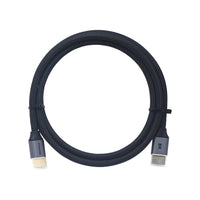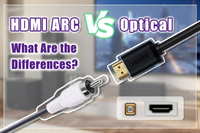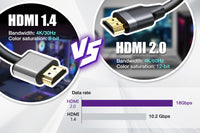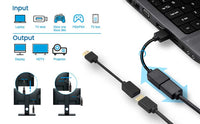Contents
Cable TV has largely revolutionized home entertainment in the past, allowing people to enjoy a wide range of TV programs. The high-speed internet and technological advancement have paved the way for streaming TV. Nowadays, an increasing number of people prefer streaming TV for its convenience and flexibility. Are you daunted about choosing between cable and streaming? Which option is best for you in 2024? Let’s explore the pros and cons of cable and streaming TV to help you make an informed decision.
What is Cable TV?
Cable TV is a system delivering television signals to the audience via coaxial cable or fiber optics according to the Federal Communications Commission (FCC). Cable TV begins its journey in the 1940s, and has attracted a large number of users. Unlike traditional broadcast television, which transmits signals via radio waves, cable TV transmits signals over physical cables to users’ homes. Before the launch of Netflix, there are more than 25 million customers for cable TV in the US.
Pros and Cons of Cable TV
Pros
Cable TV usually provides a variety of channels for users enjoying sports, news, and entertainment programs. Cable TV provides a stable, consistent, and reliable signal, which is less interference compared to traditional broadcasts. Some cable providers also offer bundled services for cost savings.
Cons
Cable TV usually requires an additional cost to extend cable TV services like HD content and better channels. Moreover, it requires set-top boxes or DVRs, which adds to the overall cost.
Cable availability depends on the Cable TV infrastructure deployed by the provider, so it is not always available in all areas, especially in remote or rural areas.
What is Streaming TV
Streaming TV allows users to watch shows, including sports, movies, and news, through an internet connection rather than relying on traditional cables or satellite TV connections. Users don’t need to wait for the DVDs or scheduled TV programs using streaming TV. For optimal performance, a high-speed internet connection and a compatible streaming device are essential in streaming TV. Users can choose common streaming service types, including live, on-demand, and free-of-ads options based on their preferences. Netflix, Hulu, YouTube, Roku TV, and Amazon Prime are the common streaming TV providers.
(Note: The streaming TV usually needs to be plugged into a TV stick to get the resources of various TV programs. When you connect the TV stick to your streaming TV, you may need a power adapter or HDMI extension cable to make it.)
Advantages and Disadvantages of Streaming TV
Advantages
One of the largest changes in streaming TV is the release of entire seasons of a TV show, allowing users to enjoy binge-watching and easily catch missed episodes. Many streaming services also provide exclusive and unique TV shows. In addition, streaming TV offers various affordable subscription options with no hidden costs.
Disadvantages
Streaming TV relies on a stable internet connection, which means that it can be easily impacted by factors like speed, bandwidth, and latency. Additionally, some streaming services may not provide the latest TV shows immediately, requiring users to wait before they can watch new content.
Cable vs. Streaming: What Are the Differences?
- Cost: The initial cost of streaming TV is often lower than traditional cable TV, but with added services, the comparison between cable and streaming can be more complex. Cable TV providers often offer bundled packages combining TV and internet services for cost savings. But cable TV often includes fees for equipment rental, premium channels, DVR costs, and taxes, so it can be more expensive than streaming TV. In contrast, streaming TV provides various subscription options, allowing people to choose the most cost-effective plan with no hidden fees. However, subscribing to different platforms at the same time can lead to costs equaling or surpassing that of traditional cable TV.
- Channel and Content: Another important difference between cable and streaming is the variety of channels. Cable TV has a wider variety of channels than streaming TV. Both cable and streaming offer various TV shows and movies. But streaming TV is continually increasing its original content and exclusive series to attract a lot of audiences. In contrast, cable TV has to provide fixed channels.
- Contract: Streaming TV allows users to subscribe to services month to month and cancel at any time except live TV streaming DIRECTV STREAM. But Cable TV providers often require long-term contracts ranging from a few months to multiple years with less flexibility.
- Video Quality: Cable TV offers services via coaxial or fiber optic cables, making it less prone to interference. So it can provide a reliable and stable video quality with few interruptions and users don’t need to worry about the sudden break. The video quality of streaming TV relies heavily on the quality of the internet connection. A slow internet connection can greatly impact the video quality, leading to frequent interruptions, buffering, and latency.
- User Experience: Regarding the user’s experience, the cable TV retains the traditional mode to play programs on TV, what users can watch depends on what the cable TV plays on. Users can’t stop the going-on TV program when they need to leave for a while. On the opposite, streaming TV provides more features like personalized recommendations, pause, and search, which can more fully meet users’ watching requirements. Users may get more convenience by using the streaming TV.
Cable vs. Streaming: Which to Choose?
Cord-cutting has been very popular in recent years. Should you cut the cord or insist on cable TV? It depends on your budget, lifestyle, and viewing preferences.
If you need to save costs, opt for the cheapest internet plan and get a streaming TV subscription.
For a large family with diverse viewing preferences, a comprehensive variety of channels provided by cable TV can be the best option. But if you are frequently on a business trip and rarely have time to watch TV, streaming TV can be a better choice.
For areas with inconsistent internet connection, it is not recommended to choose streaming TV. Cable TV offers a more reliable option to get the best video quality and viewing experience.
If you’re a sports fan who needs a regional sports network (RSN), cable TV is always the best choice to enjoy NBA basketball, MLB baseball, and other sports events.
If you care about advertisements, be aware that streaming TV may often interrupt your viewing content with ads. If you’re tired of ads, cable TV may be more suitable for you.

Final Thoughts
Though streaming TV is becoming more and more popular, cable TV still has its users. Cable TV provides a stable and comprehensive viewing experience while streaming TV provides flexibility and versatility.
For more information on this topic, you can keep up on our blogs. While VCELINK offers general and basic information for our customers and other visitors to the website, it’s not professional advice.






The number one reason streaming will never beat older TV is that it pauses, interrupts your program to ask you if you still want to watch, and cuts off the program if you don’t do it in time. I’ll be cleaning and listening to the stream only to have it stop and force me to use the remote to continue, meanwhile my hands are filthy from the cleaning.
Seems to be a comprehensive ………………..to be able to choose between cable and streaming. Now what about streaming. Do I need a special new TV to do this or can I do this on my old TV with the necessary hookups?